In the ever-evolving landscape of kitchen appliances, the quest for efficiency, reliability, and safety is paramount. As consumers demand more from their kitchen technology, manufacturers are responding with innovative solutions that meet the highest standards of quality and performance. One such standard that has gained significant traction in the global market is the CE-EMC compliance for 2200W appliances. This article delves into the intricacies of this compliance, its impact on the market, and the tangible benefits it brings to consumers.
Introduction to the European and American Kitchen Appliance Markets
The European and American kitchen appliance markets are vibrant and diverse, each with its unique characteristics and consumer preferences. In Europe, the landscape is marked by a strong emphasis on innovation, sustainability, and energy efficiency. American consumers, on the other hand, value convenience, performance, and technological integration. Understanding the nuances of these markets is crucial for manufacturers looking to tap into this lucrative sector.
In Europe, the kitchen appliance market is driven by a culture that prizes efficiency and design. From the bustling cities of Germany and Italy to the more traditional markets of France and the UK, consumers are increasingly seeking appliances that not only perform well but also complement their homes’ aesthetics. The European Union’s stringent regulations ensure that products meet high safety and environmental standards, making it a challenging but rewarding market for appliance manufacturers.
The European market is particularly notable for its preference for smart appliances. With the rise of the Internet of Things (IoT), consumers are looking for kitchen appliances that can be controlled remotely, offering convenience and energy savings. Brands like Siemens, Bosch, and Miele have long been associated with premium quality and innovation, setting the bar high for new entrants.
In the United States, the kitchen appliance market is dominated by large appliances such as refrigerators, dishwashers, and ovens. American consumers are known for their love of large, powerful appliances that can handle the demands of a busy household. Brands like KitchenAid, Whirlpool, and GE have become household names, offering a wide range of products that cater to different budgets and lifestyles.
One key difference between the two markets is the approach to energy efficiency. While both regions have stringent energy-saving regulations, the European Union’s Energy-related Products (ErP) Directive is particularly rigorous. This directive sets mandatory energy efficiency requirements for a wide range of products, including kitchen appliances, and has led to the development of more energy-efficient models.
Another significant difference is the role of technology in kitchen appliances. In Europe, smart appliances are becoming increasingly popular, with a growing number of consumers willing to invest in technology that can make their lives easier. American consumers, while also open to technology, often prioritize performance and reliability over the latest features.
Despite these differences, both the European and American markets share a common goal: to provide consumers with high-quality appliances that enhance their daily lives. This is reflected in the ongoing trend towards larger, more powerful appliances that offer a range of features and functionalities.
In Europe, the kitchen appliance market is also influenced by the rise of online shopping. With more consumers turning to the internet to purchase their appliances, manufacturers are focusing on e-commerce strategies to reach a wider audience. This shift has also led to a greater emphasis on customer service and after-sales support.
In the United States, the market is characterized by a strong focus on brand loyalty. Consumers are more likely to purchase appliances from brands they trust, which has created a competitive landscape where established brands must continuously innovate to maintain their market share.
Overall, the European and American kitchen appliance markets offer a unique set of opportunities and challenges. For manufacturers looking to succeed in these regions, it’s essential to understand the local preferences, regulations, and consumer behaviors. By doing so, they can develop products that not only meet the needs of today’s consumers but also anticipate their future demands. Whether it’s the sleek design of a European smart oven or the robust performance of an American refrigerator, the kitchen appliance market is a dynamic and evolving space that requires a nuanced understanding to navigate successfully.
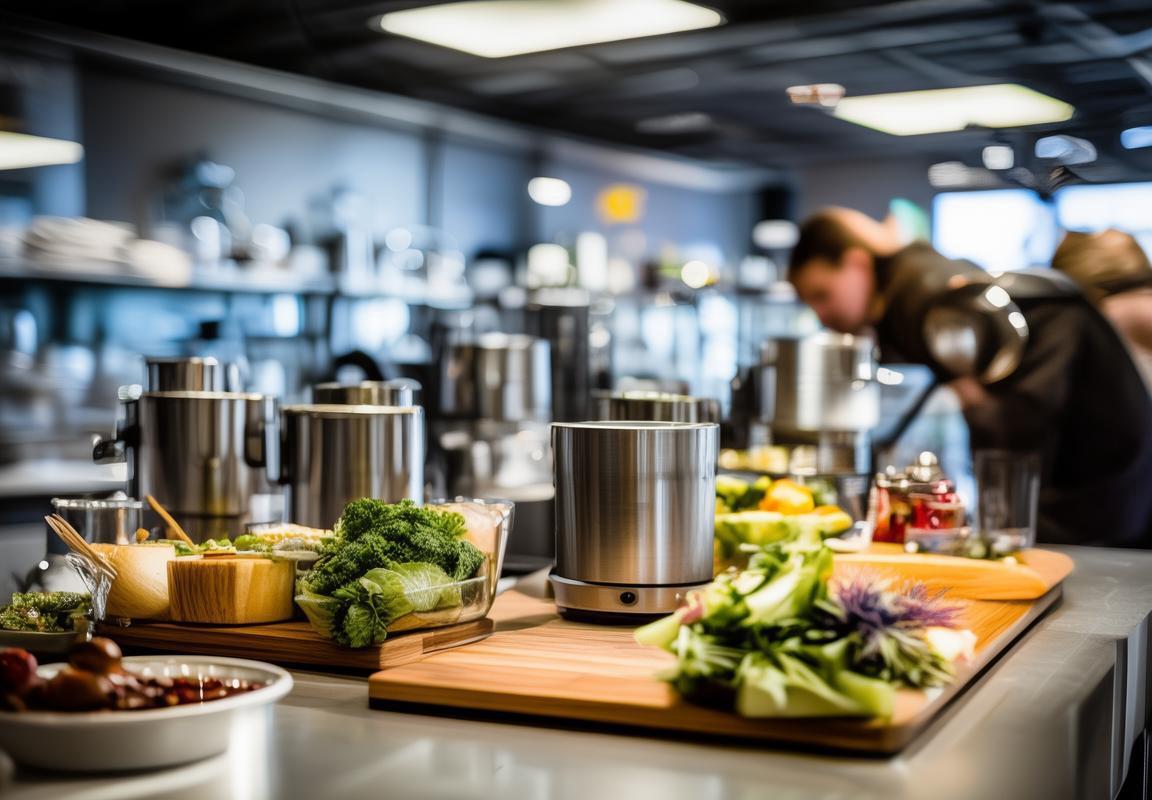
Understanding CE-EMC Compliance: What It Means for Kitchen Appliances
CE-EMC compliance, a term that might seem like a jargon to some, is actually a cornerstone in the world of kitchen appliances. It stands for Conformité Européenne (European Conformity) and Electromagnetic Compatibility (EMC), and it’s a set of regulations that ensure that electrical and electronic devices, like kitchen appliances, meet specific safety and performance standards within the European Union. Understanding what this compliance means for kitchen appliances is crucial for both manufacturers and consumers.
Firstly, the CE mark is a declaration by the manufacturer that the product complies with all the relevant EU directives. For kitchen appliances, this often includes the Low Voltage Directive (LVD) and the EMC Directive. The LVD ensures that the appliance is safe to use, with regards to electrical shock, fire, and overheating risks. The EMC Directive, on the other hand, ensures that the appliance does not emit excessive electromagnetic interference that could disrupt other devices or systems.
The EMC aspect is particularly important for kitchen appliances. Imagine a scenario where a blender, which is CE-EMC compliant, operates in the same kitchen as a microwave. Without EMC compliance, the blender’s electronic components could interfere with the microwave’s signal, potentially causing it to malfunction or even fail to heat food properly. This is a simplified example, but it illustrates the critical nature of EMC in maintaining the integrity of the electrical environment in homes.
For kitchen appliances, the CE-EMC compliance involves rigorous testing to ensure that the devices are immune to electromagnetic disturbances and do not cause any. This includes tests for emissions, susceptibility, and immunity. Emissions testing checks if the appliance emits enough electromagnetic noise to interfere with other devices. Susceptibility testing determines how well the appliance can function in the presence of electromagnetic disturbances. Immunity testing ensures that the appliance can continue to operate normally even when exposed to such disturbances.
In terms of what it means for kitchen appliances, CE-EMC compliance translates to several key benefits. For manufacturers, it means they can safely market their products across the EU without having to adapt them to different regulations in each country. This streamlines the production process and reduces costs. For consumers, it means peace of mind that their appliances are safe to use and will work reliably in their homes.
Another significant aspect of CE-EMC compliance is the emphasis on energy efficiency. In the EU, there are strict energy efficiency standards that kitchen appliances must meet to carry the CE mark. This not only benefits the environment by reducing energy consumption but also saves consumers money on their utility bills in the long run.
The compliance process is not just about meeting standards; it’s also about ensuring that the appliances are designed with these standards in mind from the outset. This means incorporating components and design features that minimize the risk of electromagnetic interference and maximize the appliance’s performance and lifespan.
Moreover, CE-EMC compliance also covers the labeling of the appliance with specific information. This includes details about the input power, energy consumption, and other relevant safety information. This labeling helps consumers make informed decisions when purchasing kitchen appliances, as they can easily compare the energy efficiency and safety features of different models.
For kitchen appliance manufacturers, achieving CE-EMC compliance requires a deep understanding of the regulations and often involves working with specialized testing laboratories. These laboratories provide the necessary equipment and expertise to conduct the required tests and issue the compliance certificates.
In conclusion, CE-EMC compliance for kitchen appliances is about more than just meeting a legal requirement; it’s about ensuring safety, reliability, and efficiency. It’s a testament to the quality and standards of the product and a guarantee to the consumer that the appliance they are purchasing is not only safe to use but also designed to perform optimally in the modern, increasingly electronic-rich kitchen environment.

Market Dynamics in the US and Europe
The European and American kitchen appliance markets are dynamic landscapes, shaped by evolving consumer preferences, technological advancements, and stringent regulatory standards. In Europe, the market is known for its preference for energy-efficient and smart appliances, while the United States boasts a diverse range of products that cater to various lifestyles and budgets.
In Europe, the demand for eco-friendly kitchen appliances has surged, driven by stringent energy efficiency regulations and a growing awareness of environmental sustainability. Consumers are increasingly seeking appliances that not only meet their functional needs but also align with their green values. Smart kitchen appliances, equipped with IoT (Internet of Things) technology, are also gaining traction, offering connectivity and control via smartphones and other devices.
The American market, on the other hand, is characterized by its variety and innovation. It caters to a wide demographic, from urban professionals looking for sleek, compact appliances to suburban families in need of robust, versatile models. The US market is also sensitive to the latest trends, with a strong focus on aesthetics and user experience. Design-forward appliances with intuitive interfaces and stylish aesthetics are becoming more popular.
In Europe, the kitchen appliance market is segmented into various categories, including cooktops, ovens, dishwashers, refrigerators, and small appliances. The cooktop segment, in particular, has seen a shift towards induction cooktops, which are more energy-efficient and responsive than traditional gas or electric models. Induction technology is also gaining ground in the US, where consumers are increasingly seeking appliances that save energy and reduce cooking times.
Refrigerators in both regions are moving towards larger capacities and more advanced features. The European market is particularly interested in built-in refrigerators that blend seamlessly with kitchen cabinets, while American consumers are drawn to models with smart features like temperature control and energy monitoring. Dishwashers, too, are becoming more sophisticated, with a focus on quiet operation and eco-friendly wash cycles.
Small appliances, such as toasters, blenders, and coffee makers, are another area of growth in both Europe and the US. These products are not only becoming more powerful and feature-rich but also more compact and portable, catering to the needs of consumers who value convenience and space-saving designs.
Another significant trend in both markets is the integration of health and wellness features into kitchen appliances. For example, some ovens now come with steam cooking capabilities, which are healthier than traditional cooking methods. Similarly, refrigerators with air purification systems are becoming more common, as consumers seek to improve the quality of the air in their homes.
In terms of technological advancements, the European and American markets are at the forefront of innovation. From the development of smart kitchen systems that can be controlled remotely to the integration of AI and machine learning, the future of kitchen appliances looks promising. These technologies are not only enhancing the functionality of appliances but also making them more intuitive and personalized.
The European market is also influenced by cultural factors, with certain countries having unique preferences. For instance, Italy is known for its passion for coffee, which has led to a demand for high-quality espresso machines. Similarly, in Germany, there’s a strong emphasis on engineering and efficiency, resulting in a preference for well-built, durable appliances.
In the United States, the kitchen appliance market is influenced by a variety of factors, including demographic shifts, economic conditions, and lifestyle changes. The aging population, for example, is driving the demand for appliances that are easy to use and maintain. Meanwhile, the rise of remote work and the increased focus on home entertainment have led to a greater interest in kitchen appliances that can support a more active and engaged lifestyle at home.
Overall, the market dynamics in both Europe and the United States are complex and multifaceted. The convergence of consumer needs, technological advancements, and regulatory requirements continues to shape the landscape of the kitchen appliance industry, ensuring that both manufacturers and consumers are presented with a wide array of options to choose from.
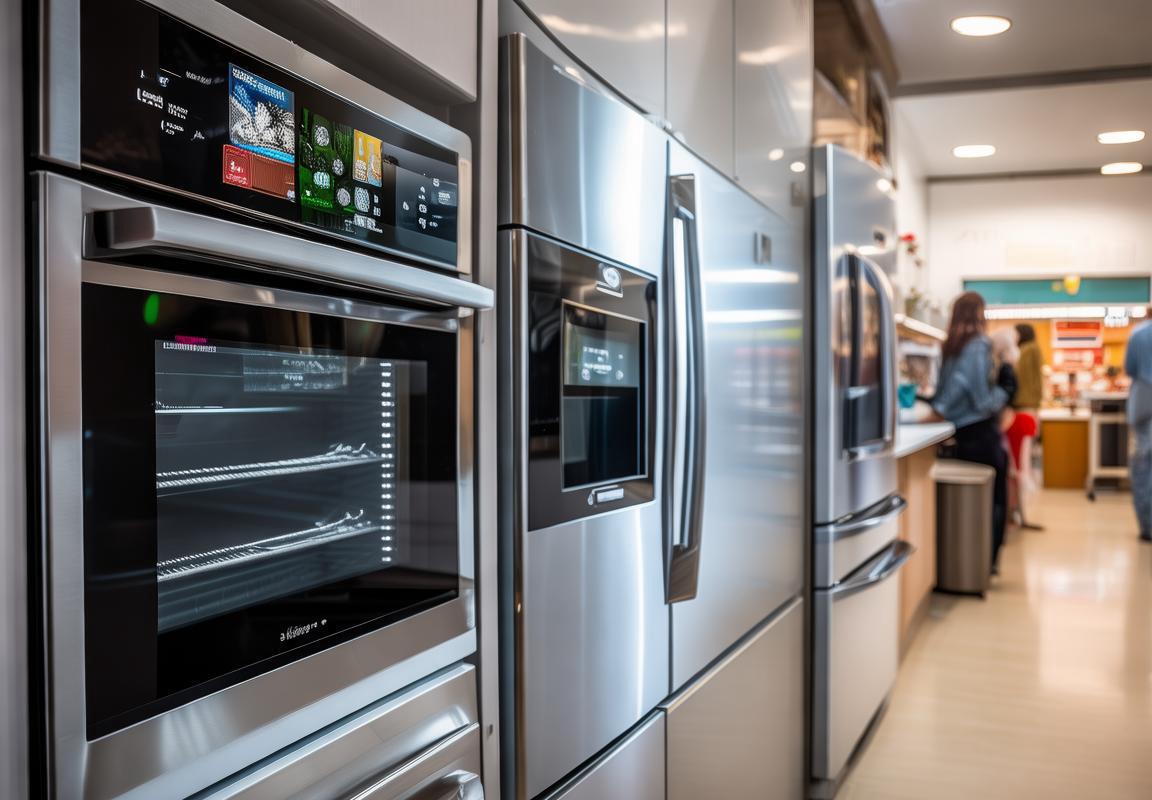
The 2200W Standard: A Benchmark in Power and Performance
In the realm of kitchen appliances, the 2200W standard has emerged as a benchmark for power and performance. This rating signifies a significant leap in the capabilities of kitchen equipment, offering users a balance between efficiency and power. Let’s delve into what this standard entails and why it’s gaining traction in the market.
The 2200W rating denotes the power output of an appliance, which is crucial for tasks that require substantial energy to operate effectively. Whether it’s a high-powered blender, a powerful oven, or a robust coffee maker, the 2200W mark ensures that these devices can handle demanding cooking and preparation tasks with ease.
One of the key advantages of the 2200W standard is its ability to significantly reduce cooking and preparation times. For instance, a 2200W induction cooktop can heat pots and pans much faster than a standard 1500W model, allowing for quicker meal preparation and more efficient use of time in the kitchen.
Energy efficiency is another critical aspect where the 2200W standard shines. Despite their higher power output, these appliances are designed to minimize energy consumption. Advanced technologies like smart heating elements and energy-saving modes help maintain optimal performance while keeping energy usage in check.
The 2200W standard also encompasses a range of features that enhance user experience. From precise temperature control to variable speed settings, these appliances offer a level of customization that caters to different cooking styles and preferences. This versatility is particularly appealing to culinary enthusiasts who demand the best from their kitchen tools.
In terms of performance, the 2200W appliances often come with superior build quality. They are constructed with durable materials and robust components that can withstand heavy usage and maintain their performance over time. This longevity is a testament to the engineering and design that goes into these high-powered devices.
The market for 2200W kitchen appliances is diverse, catering to various segments. From entry-level models that offer essential power and functionality to premium lines that incorporate cutting-edge technology and smart features, there’s something for every consumer. This variety ensures that the 2200W standard appeals to a broad audience, from busy professionals to passionate home chefs.
Safety is a paramount concern in kitchen appliance design, and the 2200W standard does not compromise on this front. These appliances are equipped with multiple safety features, including overheating protection, automatic shut-off mechanisms, and stable platforms to prevent accidents. Users can operate these devices with confidence, knowing that their safety is a top priority.
Innovation plays a vital role in the 2200W market. Manufacturers are constantly pushing the boundaries of what’s possible, integrating features like Wi-Fi connectivity, voice control, and even AI-driven cooking assistance. These advancements not only enhance the user experience but also make these appliances more adaptable to the evolving needs of consumers.
The environmental impact of kitchen appliances is also a growing concern. The 2200W standard addresses this by promoting energy-efficient designs that reduce carbon footprints. As consumers become more environmentally conscious, the demand for energy-saving appliances is on the rise, and the 2200W category is well-positioned to meet this demand.
Lastly, the 2200W standard has the potential to revolutionize the way we cook. With its high power output and advanced features, these appliances can handle a wide range of culinary tasks with precision and efficiency. From intricate baking to complex recipes, the 2200W kitchen appliance is a powerful tool that can elevate the cooking experience to new heights.
In conclusion, the 2200W standard is more than just a number—it represents a commitment to power, performance, and innovation in the world of kitchen appliances. As technology continues to advance, we can expect to see even more impressive features and capabilities emerge within this category, making it an essential consideration for anyone looking to upgrade their kitchen with the best in power and performance.

CE-EMC Compliant 2200W Appliances: A Deep Dive
In the competitive landscape of kitchen appliances, achieving CE-EMC compliance for 2200W products is not just a legal requirement—it’s a mark of quality and efficiency. Let’s delve into what this compliance entails and why it’s crucial for appliances that operate at this power rating.
The 2200W threshold is significant in the world of kitchen appliances. It’s a power level that many high-performance appliances, such as cooktops, ovens, and food processors, reach. This power rating is often a testament to the appliance’s capability to handle demanding tasks with speed and precision. However, with greater power comes greater responsibility, particularly in ensuring that these appliances don’t interfere with other electronic devices or emit harmful electromagnetic frequencies.
CE marking, or Conformité Européenne, is a mandatory certification for products sold in the European Union. It signifies that a product meets all the EU’s health, safety, and environmental protection standards. For 2200W appliances, CE certification covers a range of requirements, from the materials used to the design and functionality of the appliance itself.
EMC, or Electromagnetic Compatibility, is another critical aspect of CE compliance. It refers to the ability of an appliance to function correctly in its electromagnetic environment without causing interference to other devices or being affected by them. In the case of 2200W appliances, this means they must be designed to operate efficiently without emitting electromagnetic waves that could disrupt Wi-Fi signals, television reception, or other electronic devices in the home.
To achieve CE-EMC compliance for a 2200W appliance, manufacturers must undergo rigorous testing. These tests include assessing the appliance’s immunity to electromagnetic disturbances and its own emissions. This involves checking the appliance’s electrical and electronic components for any potential sources of interference. For example, transformers, motors, and capacitors can all be sources of unwanted electromagnetic signals.
One key area of concern for 2200W appliances is their power supply. To meet CE-EMC standards, these appliances must use a stable and clean power supply that minimizes fluctuations and harmonic distortions. This not only ensures the appliance’s reliability but also contributes to its energy efficiency, which is a growing concern among consumers and regulatory bodies alike.
Another aspect of compliance is the appliance’s design. CE-EMC compliant 2200W appliances are typically designed with a range of shielding techniques to reduce emissions. This might include the use of metal enclosures to block out external interference or incorporating filters to suppress high-frequency signals. These design choices not only help in meeting regulatory standards but also enhance the overall performance and longevity of the appliance.
Consumers benefit from CE-EMC compliant 2200W appliances in several ways. Firstly, these appliances are generally safer to use, as they have been tested to ensure they do not pose a risk to users or their surroundings. Secondly, the reduced emissions mean less interference with other electronic devices, which is particularly important in today’s connected homes where multiple devices are in use simultaneously.
In terms of performance, CE-EMC compliant 2200W appliances are designed to operate at optimal levels, providing efficient and effective power delivery. This is especially true for cooking appliances, where consistent heat distribution and control are crucial for achieving the best results. The compliance process often forces manufacturers to refine their product designs, leading to appliances that are not only compliant but also superior in terms of performance.
Moreover, CE-EMC compliance can also be a competitive advantage for manufacturers. It signals to consumers that the appliance has passed stringent quality checks and adheres to high safety and environmental standards. This can be a deciding factor for consumers looking to invest in reliable and sustainable kitchen appliances.
In the realm of after-sales service, CE-EMC compliant 2200W appliances are also easier to maintain and repair. With standardized designs and components, these appliances can be serviced more efficiently, leading to lower costs for both manufacturers and consumers.
In conclusion, the CE-EMC compliance for 2200W appliances is not just a regulatory hurdle but a testament to the appliance’s quality and reliability. It ensures that these high-powered kitchen essentials not only perform their intended tasks effectively but also coexist harmoniously within the modern, tech-savvy household. For consumers, this means peace of mind, for manufacturers, it’s a commitment to excellence, and for the industry as a whole, it’s a step towards a more sustainable and efficient future.
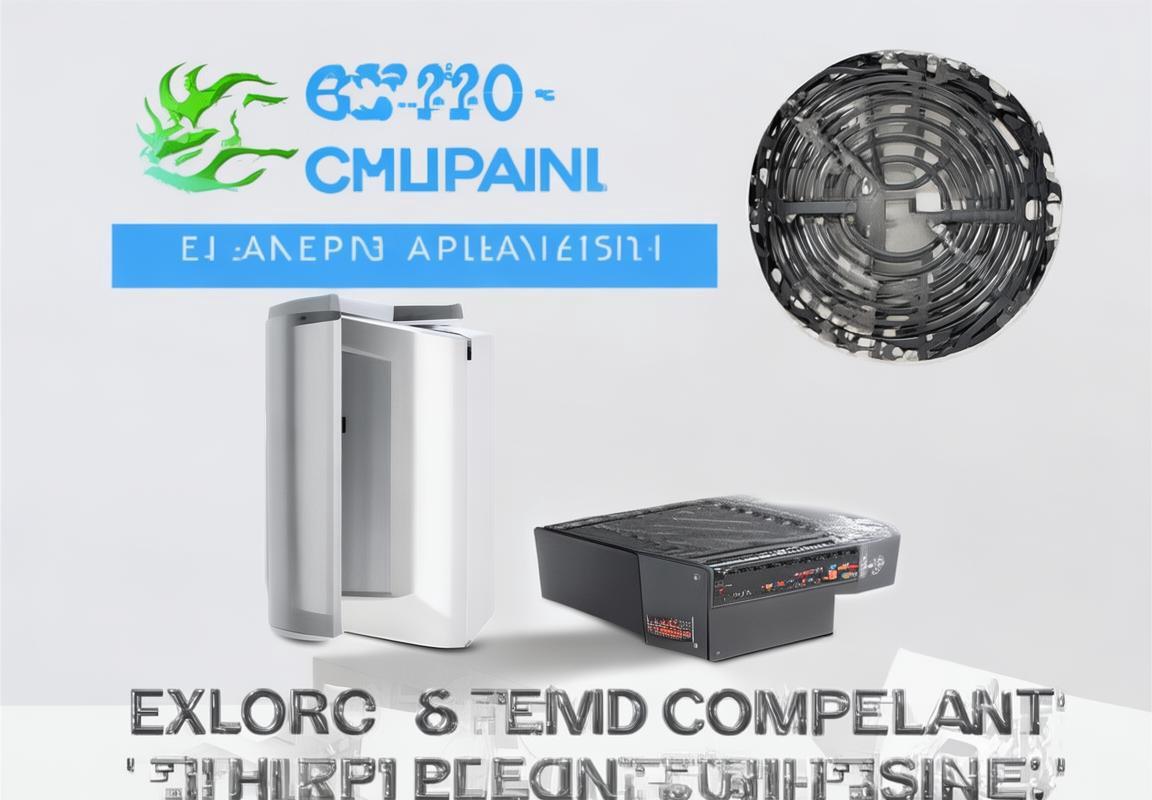
Consumer Benefits of CE-EMC Compliant 2200W Appliances
In today’s fast-paced world, consumers are always on the lookout for appliances that not only enhance their lifestyle but also meet the stringent safety and efficiency standards. CE-EMC compliant 2200W appliances have emerged as a popular choice for many, offering a blend of power, performance, and peace of mind. Let’s delve into the array of benefits these appliances provide to consumers.
The reliability of CE-EMC compliant 2200W appliances is unmatched. These devices are designed to adhere to the European Conformité Européenne (CE) and Electromagnetic Compatibility (EMC) standards, ensuring that they are safe to use and compatible with other electronic devices. This compliance means that these appliances have undergone rigorous testing to meet specific safety requirements, giving consumers confidence in their purchase.
Energy efficiency is a major concern for many consumers, and 2200W appliances hit the mark in this aspect. These devices are designed to consume less energy without compromising on performance. The 2200W rating strikes a balance between power and efficiency, making them ideal for tasks that require substantial energy but also value energy conservation. This efficiency not only helps in reducing utility bills but also contributes to a greener planet.
The performance of CE-EMC compliant 2200W appliances is top-notch. Whether it’s a blender, an oven, or a coffee machine, these appliances are built to deliver exceptional results. The higher power rating ensures that these devices can handle heavy-duty tasks with ease, providing users with consistent and reliable performance. This is particularly beneficial for those who demand speed and efficiency in their kitchen routines.
Safety features are a cornerstone of CE-EMC compliant appliances. These devices come with built-in safety mechanisms that protect users from potential hazards. For instance, overheating protection, automatic shut-off functions, and child safety locks are standard features. These safety features are crucial in preventing accidents and ensuring that the appliance operates smoothly without causing any harm to the user or their property.
The longevity of CE-EMC compliant 2200W appliances is another significant benefit. By adhering to strict quality and safety standards, these appliances are constructed with durable materials and components. This attention to detail ensures that the appliance will withstand the test of time, reducing the need for frequent repairs or replacements. Consumers appreciate this longevity as it adds value to their purchase and minimizes the hassle of dealing with faulty appliances.
In terms of compatibility, CE-EMC compliant 2200W appliances are versatile. They are designed to work seamlessly with a wide range of other electronic devices, minimizing the risk of interference or disruption. This compatibility is especially important in the kitchen, where multiple appliances are often used simultaneously. Consumers can rest assured that their 2200W appliance will not interfere with their refrigerator, microwave, or any other kitchen gadget.
CE-EMC compliant 2200W appliances also offer convenience. With their advanced features and user-friendly interfaces, these devices make kitchen tasks easier and more enjoyable. From intuitive controls to programmable settings, these appliances are designed to cater to the needs of modern consumers who seek efficiency and convenience in their daily lives.
Moreover, the sleek and modern designs of CE-EMC compliant 2200W appliances add a touch of elegance to any kitchen. These appliances are not just functional; they are also visually appealing. The contemporary look of these devices can elevate the aesthetic appeal of a kitchen, making it a more inviting space for cooking and entertaining.
Lastly, the cost-effectiveness of these appliances is a crucial factor for consumers. While they may come with a higher initial price tag compared to non-compliant models, the long-term savings on energy bills and the reduced need for repairs can offset this cost. Additionally, the durability and reliability of CE-EMC compliant 2200W appliances mean that consumers are investing in a product that will serve them well over the years.
In conclusion, the consumer benefits of CE-EMC compliant 2200W appliances are multifaceted. From enhanced safety and energy efficiency to superior performance and convenience, these appliances offer a comprehensive package that appeals to the modern consumer’s needs. With their emphasis on quality, reliability, and user-friendliness, CE-EMC compliant 2200W appliances have become a go-to choice for those who want the best of both worlds in their kitchen.
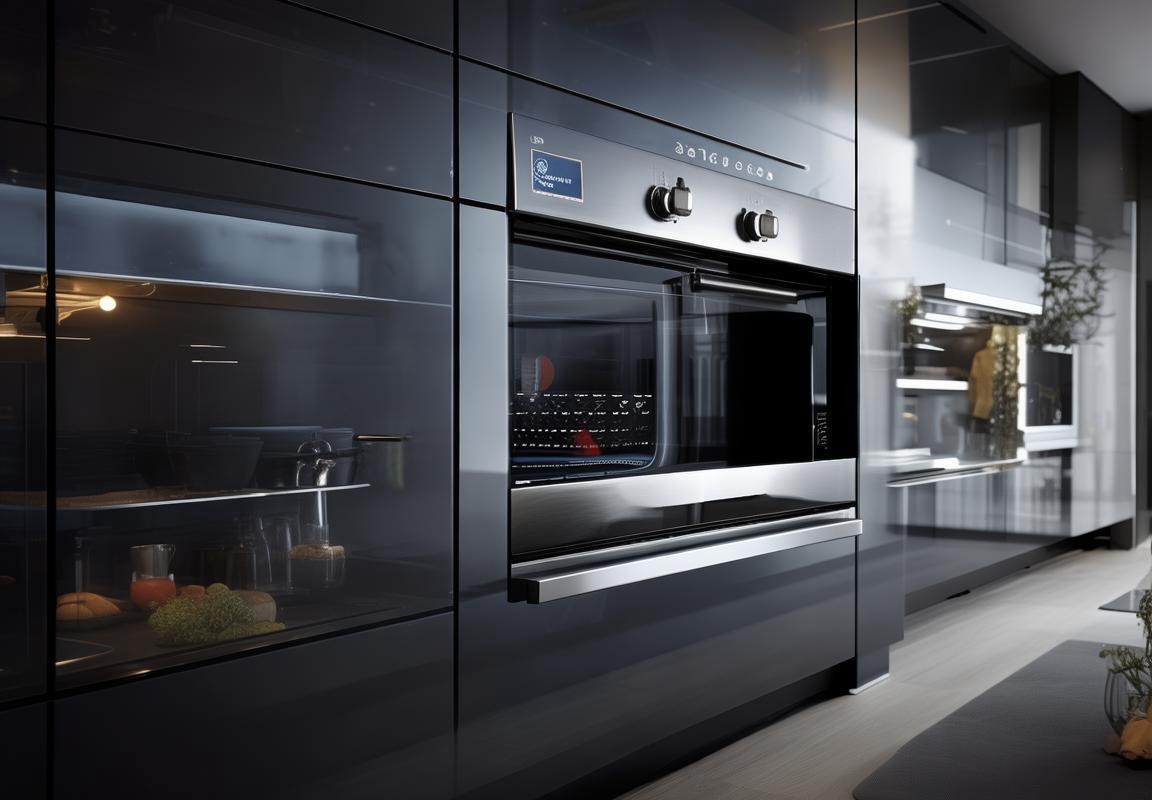
Regulatory Landscape and Certification Processes
In the realm of kitchen appliances, navigating the regulatory landscape is crucial for manufacturers and consumers alike. The process of certification ensures that products meet specific safety and performance standards. Here’s a deep dive into the regulatory environment and certification procedures for CE-EMC compliant 2200W appliances.
The European Union’s regulatory framework is a cornerstone for CE-EMC compliance. It encompasses a range of directives and regulations that govern the design, manufacture, and sale of electrical and electronic equipment. The CE marking, which stands for Conformité Européenne, is a symbol of compliance with these regulations. For 2200W appliances, this means adhering to stringent requirements in terms of energy efficiency, safety, and electromagnetic compatibility.
The EMC directive, specifically, deals with the electromagnetic compatibility of electrical equipment. It ensures that products do not generate electromagnetic interference (EMI) that could disrupt other devices or systems. For a 2200W appliance, this involves rigorous testing to ensure that it operates within a defined electromagnetic field without causing interference.
In the United States, the process is somewhat different, with the Federal Communications Commission (FCC) overseeing electromagnetic compatibility. The FCC requires that all devices that operate over radio frequencies must be tested to ensure they do not cause harmful interference to other devices. For 2200W appliances, this means adhering to the FCC’s Part 15 rules, which are designed to minimize such interference.
Certification processes are complex and can vary depending on the country and the specific regulations in place. Here’s a breakdown of the typical steps involved:
-
Design and Development: From the outset, designers must consider compliance with CE-EMC standards. This involves selecting components and materials that meet the necessary safety and efficiency criteria.
-
Testing: Once the appliance is designed, it must undergo a series of tests to ensure it meets the required standards. These tests are conducted by an accredited testing laboratory and can include electrical safety, energy efficiency, and EMC tests.
-
Documentation: Comprehensive documentation is prepared to accompany the appliance. This includes technical drawings, test reports, and user manuals that detail the appliance’s compliance with the relevant regulations.
-
Declaration of Conformity: A Declaration of Conformity (DoC) is a formal statement by the manufacturer that the appliance meets all applicable EU directives. This document is a crucial part of the certification process.
-
Filing: In some cases, manufacturers must file the documentation with the appropriate regulatory authority. This can be a lengthy process, requiring detailed information about the product and its compliance with regulations.
-
Marking: Once the appliance has been certified, it can be marked with the CE symbol. This indicates to consumers and retailers that the product has passed the necessary tests and complies with EU regulations.
In the United States, the process is similar but involves different agencies and standards. The certification process may also require additional steps, such as registering the product with the FCC or obtaining a specific FCC ID number.
The certification process for 2200W appliances is not just about meeting legal requirements; it’s also about ensuring consumer safety and trust. By adhering to these standards, manufacturers can offer products that are not only compliant but also reliable and efficient.
The regulatory landscape and certification processes are dynamic, with new regulations and standards being introduced regularly. For manufacturers, staying informed about these changes is essential to maintain compliance and ensure that their products continue to meet the highest standards of quality and safety.
In conclusion, the journey to certification for CE-EMC compliant 2200W appliances is a meticulous one, involving careful design, thorough testing, and meticulous documentation. It’s a process that ultimately benefits consumers by providing them with products that are safe, efficient, and reliable.
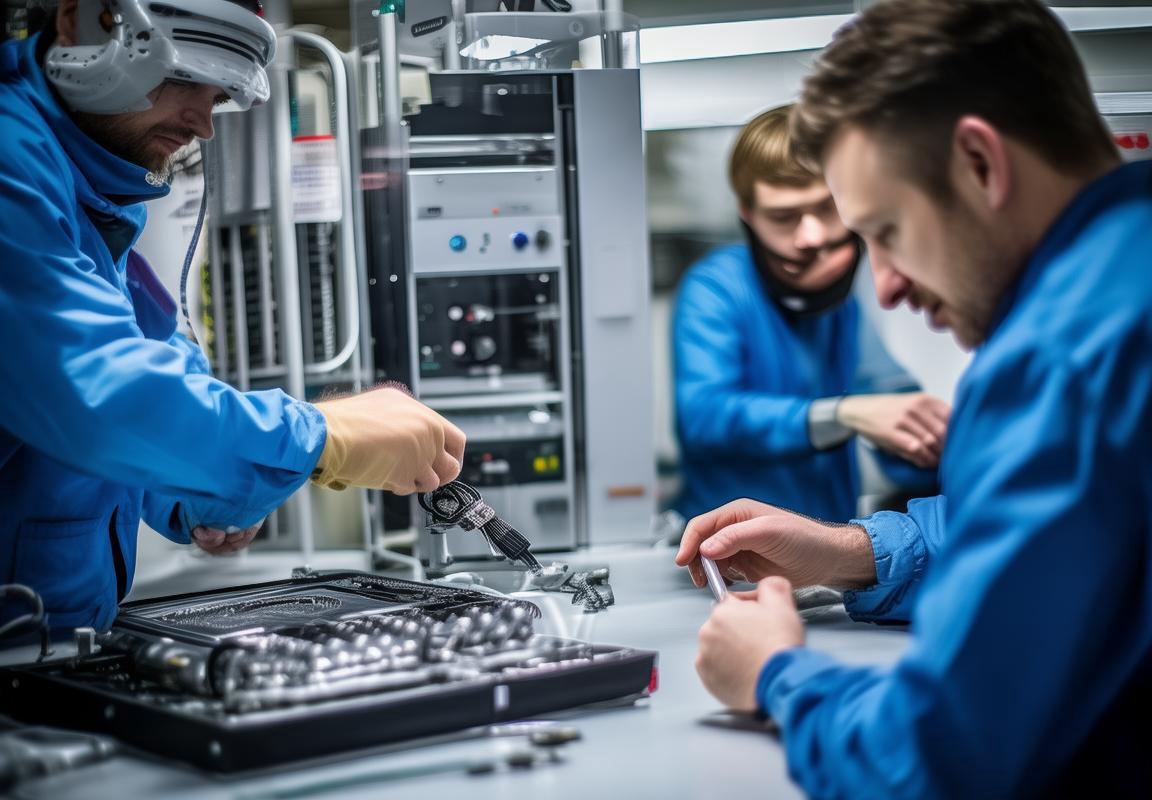
Industry Insights and Future Predictions
In the ever-evolving landscape of kitchen appliances, understanding industry insights and making informed predictions about the future is crucial. The following insights delve into the trends shaping the industry and the potential trajectory of kitchen appliances, particularly focusing on the 2200W category.
The integration of smart technology continues to revolutionize the kitchen appliance market. From voice-activated ovens to smart refrigerators that can order groceries, consumers are increasingly seeking appliances that not only enhance their cooking experience but also integrate seamlessly with their daily lives.
Energy efficiency remains a key driver in the appliance industry. As environmental concerns grow, manufacturers are under pressure to produce appliances that consume less energy while maintaining or improving performance. This trend is particularly pronounced in the 2200W segment, where even small improvements in energy efficiency can lead to significant savings over the appliance’s lifetime.
The demand for healthier cooking options is on the rise. Consumers are looking for appliances that can help them prepare nutritious meals, such as air fryers and pressure cookers. These appliances not only offer healthier alternatives to deep-frying and boiling but also provide quick and convenient cooking times.
Customization is becoming more important, with consumers seeking appliances that can be tailored to their specific needs. This includes features like adjustable temperature settings on ovens and programmable cooking modes on microwaves. The ability to customize cooking settings can lead to better control over the cooking process and improved results.
The influence of social media and online reviews cannot be overstated. With the ease of sharing experiences and opinions online, consumers are more likely to make purchase decisions based on what they see and hear from others. This has led to a greater emphasis on product quality and brand reputation in the appliance industry.
In terms of future predictions, the market for 2200W appliances is expected to see continued growth, driven by the following factors:
The rise of smart homes is set to expand the market for 2200W appliances. As more homes are equipped with smart systems, there will be a greater need for appliances that can connect and interact with these systems, offering enhanced functionality and convenience.
Sustainability will play a significant role in the future of kitchen appliances. As regulations become stricter and consumer awareness grows, manufacturers will be forced to innovate and produce appliances that are more environmentally friendly throughout their lifecycle.
The global population’s aging demographic will impact the kitchen appliance market. There will be an increased demand for appliances that are easy to use, have accessible controls, and offer safety features to accommodate older users.
Technological advancements, such as the integration of AI and machine learning, could lead to appliances that learn from user habits and provide personalized cooking suggestions. This level of personalization could revolutionize the way we interact with kitchen appliances.
The rise of subscription services for appliances may also become a trend. Similar to the subscription model for software and streaming services, consumers might opt for a subscription to receive regular updates and maintenance for their kitchen appliances.
In conclusion, the kitchen appliance industry is poised for significant changes in the coming years. The 2200W category, in particular, will likely see continued innovation and growth as manufacturers strive to meet the evolving demands of consumers. By staying informed about industry trends and technological advancements, both manufacturers and consumers can navigate this dynamic market with confidence.
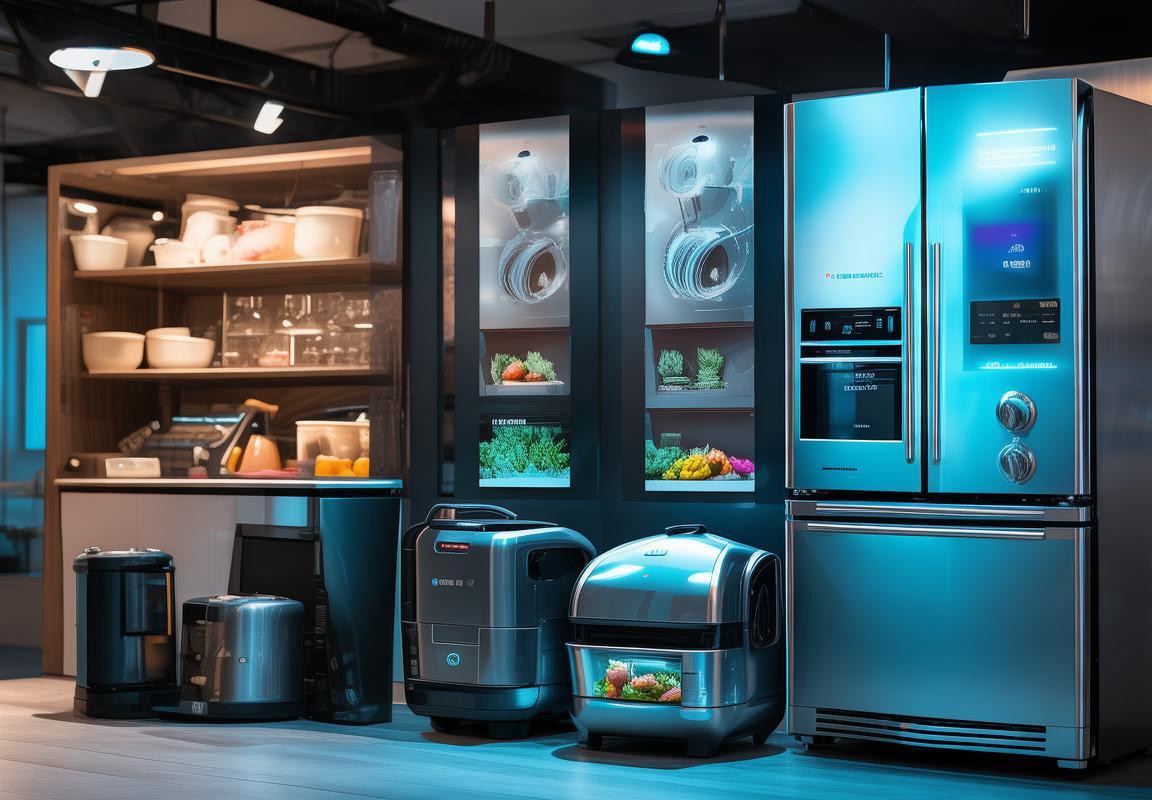
Case Studies: Successful CE-EMC Compliant 2200W Appliances
In the competitive kitchen appliance market, a few brands have managed to stand out by producing CE-EMC compliant 2200W appliances that not only meet the highest European and American safety standards but also deliver exceptional performance. Here are a few case studies highlighting the success of such appliances.
The Bosch Serie 6 KettleThe Bosch Serie 6 kettle is a prime example of a CE-EMC compliant 2200W appliance. This sleek and stylish kettle boasts advanced features such as a fast boiling function and a temperature control setting. The design is thoughtful, with a removable lid and a concealed heating element for easy cleaning and safety. Users appreciate its durability and the peace of mind that comes with knowing it adheres to stringent safety regulations.
The LG Smart OvenLG’s Smart Oven is another shining example of a 2200W appliance that is both efficient and safe. The oven comes equipped with various cooking modes and an air fryer function, allowing users to enjoy a variety of cooking methods. Its smart technology enables precise temperature control, ensuring that food is cooked to perfection. The CE-EMC compliance is evident in the oven’s sturdy construction and the absence of any interference with electronic devices due to its effective electromagnetic compatibility.
The GE Profile DishwasherGeneral Electric’s Profile dishwasher series features a 2200W model that has become a favorite among homeowners. This dishwasher offers powerful cleaning capabilities with a quiet operation, thanks to its advanced noise-reduction technology. The appliance’s CE-EMC compliance is demonstrated by its minimal electromagnetic emissions, which prevent interference with other home electronics. Customers are delighted with the combination of efficiency, reliability, and compliance.
The Siemens SpeedPerfect BlenderSiemens has made a name for itself with the SpeedPerfect blender, a 2200W kitchen appliance that lives up to its name. This blender offers high-performance blending with its powerful motor and variable speed settings. The CE-EMC compliance is a testament to Siemens’ commitment to safety and quality. Users find that the blender operates smoothly and efficiently, with no unwanted electronic noise or interference.
The KitchenAid Artisan MixerKitchenAid’s Artisan mixer series includes a 2200W model that has been a hit with baking enthusiasts. This mixer is known for its robust performance and durable construction. The CE-EMC compliance is a key factor in the mixer’s reliability, ensuring that it operates without causing any electromagnetic disturbances. Bakers appreciate the precision and consistency that the mixer provides, along with the assurance that their appliance meets safety standards.
The Kenmore Elite Washing MachineKenmore’s Elite washing machine with a 2200W motor has won over many consumers with its advanced features and reliable performance. The machine offers a variety of cycles and settings, making it suitable for different types of fabrics and soil levels. Its CE-EMC compliance is crucial for its seamless integration into the home environment, without causing any electromagnetic interference. Users are satisfied with the washing machine’s ability to handle large loads efficiently while maintaining quiet operation.
These case studies illustrate how brands have capitalized on the 2200W power rating to create appliances that not only perform well but also adhere to strict compliance standards. By focusing on quality and safety, these brands have built trust with consumers, ensuring a market position that is difficult for competitors to surpass.
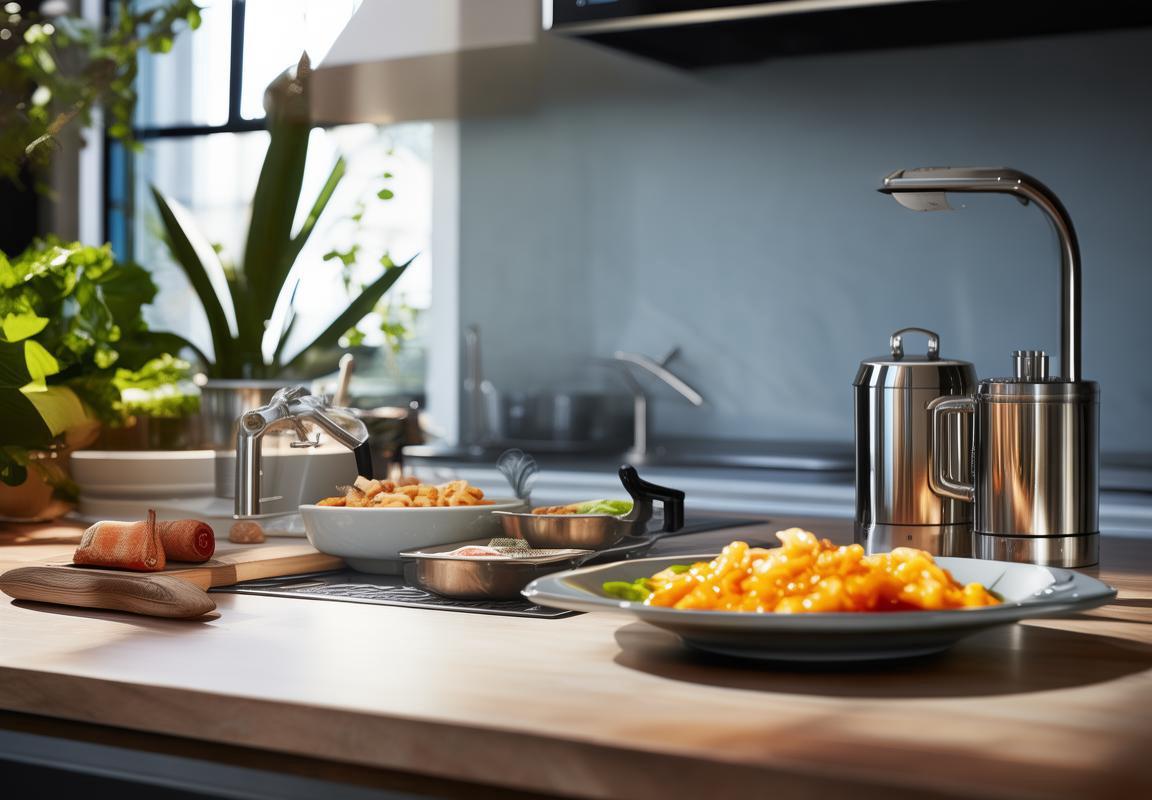
Conclusion: The Importance of CE-EMC Compliance for 2200W Kitchen Appliances
The significance of CE-EMC compliance cannot be overstated in the realm of 2200W kitchen appliances. As these appliances continue to power our homes, the adherence to these standards ensures safety, efficiency, and a seamless integration into the European and American markets. Let’s reflect on the impact of this compliance on the consumer, the industry, and the future of kitchen appliances.
Appliances that meet CE-EMC standards often come with a higher price tag, but this investment is justified by the peace of mind it brings. Consumers can trust that these devices have undergone rigorous testing to meet safety and environmental regulations. The added cost is a small price to pay for the assurance that the appliances they purchase are not only safe but also contribute to a healthier environment.
In the European and American markets, consumers are increasingly looking for appliances that offer both performance and sustainability. CE-EMC compliant 2200W appliances not only provide the power needed for efficient cooking but also do so with a minimal environmental footprint. This dual focus on performance and eco-friendliness has become a major selling point for many consumers.
For the industry, CE-EMC compliance is not just a regulatory requirement; it’s a competitive advantage. Brands that can offer CE-EMC compliant appliances are often seen as leaders in innovation and quality. This reputation can lead to increased market share and customer loyalty. Companies that invest in compliance also tend to have a more streamlined product development process, which can reduce time-to-market and improve efficiency.
When it comes to the certification process, it’s a complex and detailed journey. Manufacturers must ensure that their 2200W appliances meet specific electromagnetic compatibility (EMC) standards, which dictate how the appliance interacts with other electronic devices and how it emits electromagnetic signals. The compliance also involves safety standards that cover electrical and thermal hazards.
The regulatory landscape is continuously evolving, with new guidelines and amendments being introduced regularly. For instance, the European Union has been working on the Energy Labeling Directive, which aims to provide consumers with clear and comprehensive information about the energy efficiency of appliances. This kind of regulation not only forces manufacturers to innovate but also rewards them for producing more energy-efficient products.
Looking ahead, the future of kitchen appliances seems to be bright, especially for those that embrace CE-EMC compliance. As smart home technology becomes more prevalent, the need for appliances that can communicate seamlessly with other devices grows. CE-EMC compliant 2200W appliances are well-positioned to integrate with smart home systems, offering consumers a more connected and efficient kitchen experience.
Case studies of successful CE-EMC compliant 2200W appliances reveal a consistent theme: innovation in design and technology. For example, a popular brand of induction cooktops has seen a surge in sales due to its advanced heating capabilities and compliance with CE-EMC standards. These cooktops not only cook food faster and more evenly than traditional electric or gas stoves but also consume less energy and are more environmentally friendly.
In another case, a high-end blender brand has gained a loyal following by introducing a line of 2200W blenders that are CE-EMC compliant. These blenders not only offer the power needed to blend the toughest ingredients but also do so with minimal noise and no interference with other electronic devices in the kitchen.
In conclusion, the importance of CE-EMC compliance for 2200W kitchen appliances cannot be overstated. It ensures safety, efficiency, and compatibility with the latest smart home technologies. As consumers become more environmentally conscious and value-added features in their appliances, compliance with these standards will continue to be a crucial factor in the success of kitchen appliance brands. The industry is evolving, and those who adapt to the changing landscape of compliance and innovation will be the ones that thrive in the future.